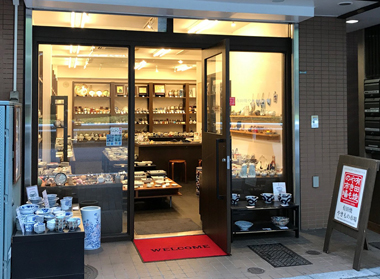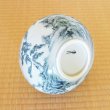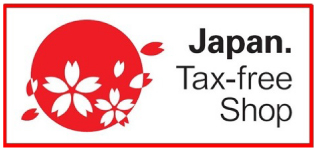Vase Gourd Shape Somestuke Sansui Landscape | The first-generation head of the Shinemon Kiln [146165]
Price: 220,000JPY
Weight: 2000g
Item description
Width: 18cm / Height: 19.2cm
Width: 7.1in / Height: 7.6in
-----------------------
Works by the late Shinichiro Baba, the first-generation Shinemon and predecessor of the Shinemon Kiln, a representative kiln of Arita ware. It is a small, auspicious gourd-shaped vase adorned with a Sansui landscape painting.
The current Shinemon Kiln is a leading authority in the Yohen technique, which skillfully manipulates glazes. However, this piece is not created using the Yohen technique but is painted with "sometsuke" (blue and white porcelain). This is because this large vase was created by the first-generation Shinemon, the late Shinichiro Baba, who founded the Shinemon Kiln. While he was exploring the Yohen technique throughout his career, he crafted this piece using the skills he had mastered up to that point. It is a work in which he fully demonstrated his skill using sometsuke, a basic painting technique of Arita ware. Since Sometsuke works are rarely produced at the current Shinemon Kiln, this piece is now considered highly rare and valuable.
Firstly, it has a unique shape known as "Hisago-gata," which is modeled after a gourd. Since ancient times, gourds have been considered symbols of "abundance and prosperity" as well as "harmony and stability," making them a representative form of auspicious shapes. The round shape of the gourd symbolizes abundance and prosperity, which is why it represents "wealth and prosperity." The widened lower part signifies "holding many things," symbolizing an increase in wealth and happiness. Additionally, the gourd's shape is considered a symbol of "harmony and stability" due to its balanced proportions. It is favored as an auspicious object, wishing for harmony in family and human relationships.
The depicted "Sansui" refers to landscape paintings that primarily feature natural scenery such as mountains, rivers, lakes, trees, and rocks, with little emphasis on human presence. When humans or buildings are depicted, they are portrayed small, emphasizing the vastness of nature. Sansui paintings are heavily influenced by Daoism, Confucianism, and Zen Buddhism from China. These philosophies emphasize respect for nature and the pursuit of harmony with the natural world. Sansui paintings reflect this philosophical and religious background, expressing human spiritual harmony through nature. Besides ceramics, Sansui is often depicted in ink wash paintings on hanging scrolls, making it a classic subject in the world of traditional art.
From the perspective of production techniques, this piece is created using the sometsuke (blue and white porcelain) technique. Sometsuke is a painting technique where the designs are drawn on the bisque-fired pottery before applying the glaze. The unique brushwork and touch of the sometsuke technique allow for a more delicate expression of the Sansui landscape. Sometsuke involves painting on the bisque-fired pottery, which is absorbent, making it impossible to make corrections. In other words, it is completed with a single, decisive brushstroke. It is a masterpiece completed with perseverance, concentration, and compositional skill.
[Potter Profile]
Shinichiro Baba (deceased)
The first-generation head of the Shinemon Kiln
Member of Nitten / Full Member of the Japan Contemporary Arts and Crafts Association / Member of the Saga Prefecture Ceramic Association / Member of the Arita Ceramic Association
Shinichiro Baba's career is as follows :
Born in 1924 in Arita, Saga Prefecture
1972: Founded the Shinemon Kiln in Arita.
1979: Selected for the Prefecture Exhibition with "Hexagonal Celadon Bowl."
1981: Selected for the Nitten exhibition with "Oil Spot Tenmoku Large Bowl," subsequently selected 21 times.
1989: Appointed as an art exhibition judge.
2000: Exhibited "Saiun-99" and "Sai-99" at the British Museum in London (Saga Prefecture Ceramic Exhibition).
2004: Exhibited "Saikei" and "Saimon" at the Arita Pottery Exhibition in Germany.
[Main Awards]
1983: Won the First Place Bijutsu Kyokai Prize at the Bijutsu Kyokai Exhibition for "Cinnabar Flower Vase."
1986: Received the Grand Prize and the Contemporary Craft President's Prize at the Contemporary Crafts Kyushu Exhibition.
1996: Awarded the Contemporary Craft Prize at the Contemporary Craft Exhibition for "Akebono no Nagisa."
2000: Received the Full Member Prize at the Contemporary Craft Exhibition for "Rensaku・Sai."
 |
||||||||||||
Import duties, taxes, and charges are not included in the item price or shipping cost. To residents of Europe: |
||||||||||||
 |
||||||||||||
|
||||||||||||











